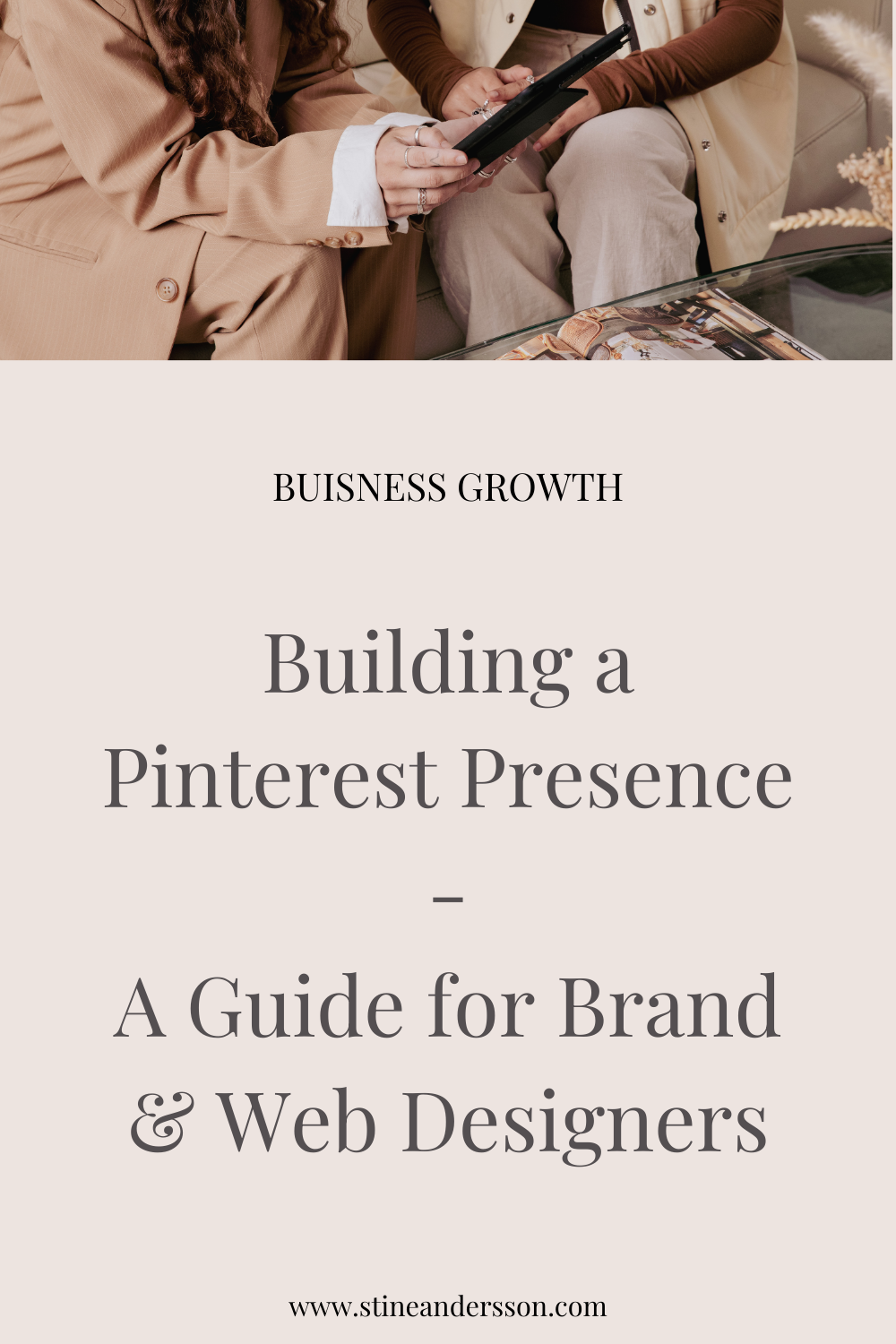Did you know that 482 million people worldwide use Pinterest every month, searching for visual inspiration and ideas? That’s a massive potential audience for brand and web designers looking to connect with their ideal clients.
But here’s the secret: Pinterest isn’t social media. It’s a powerful marketing tool. It’s designed to help businesses reach their target audience. Other platforms bombard users with ads and irrelevant content. In contrast, Pinterest users seek out new products, services, and ideas. This means you can reach them at the start of their buying journey. This is when they’re most open to finding and connecting with brands that fit their needs and preferences.
In this blog post, I’ll explore how brand and web designers can use Pinterest. This is true even if you are new to the platform. You can use it to attract your dream clients, show your design skills, and build a thriving design business.
Building Your Captivating Pinterest Presence: A Guide for Brand & Web Designers
Pinterest has 482 million active users. It offers brand and web designers unique opportunities to attract their dream clients and show their design expertise. But simply creating a profile isn’t enough. To stand out and grab attention, you must build a presence that captivates your audience.
Here’s a step-by-step guide to help you get started:
1. Define Your Ideal Client and Find Out If They Are On Pinterest:
The key to any good marketing strategy is understanding your target audience. You also need to know where to find them. Take time to create a detailed profile outlining your ideal clients:
-
Industry: What types of businesses are they involved in? According to Pinterest’s audience insights, 60% of users are Millennials, with a significant presence of users in home decor (50%), fashion (43%), and food & drink (42%) industries.
-
Needs and goals: What are their design challenges and aspirations? Consider what design services they need. Also, think about the visual styles that fit their brand.
-
Online behavior: Where do they spend their time online, and what type of content do they engage with? 70% of Pinterest users use the platform to plan future purchases. This makes it ideal for designers to show their work and meet potential clients early in their buying journey.
2. Craft Compelling Boards:
Think of your boards as categorized galleries. They showcase your design skills and cater to your ideal client’s interests.
-
Start with a few core boards: Focus on specific design niches or services you offer (e.g., logo design, web development, branding). Consider the top searched keywords on Pinterest related to your niche, and add these to your board title and description.
-
Curate captivating content:
-
Include a mix of your design work: Showcase your best projects and highlight case studies demonstrating your versatility and expertise.
-
Search for inspirational visuals: Look for high-quality images and graphics that align with your design style and target audience’s interests. Consider trends and styles popular within your niche on Pinterest itself.
-
Incorporate content related to your niche: Share informative articles, tutorials, and industry insights that establish you as a thought leader and resource for your ideal client.
-
-
Optimize board titles and descriptions: Use relevant keywords your ideal client might search for, along with clear and engaging descriptions.
-
Aim for conciseness and clarity: Keep titles under 60 characters and descriptions under 500 characters.
-
Use strong verbs and action words: Encourage users to save pins to their boards and engage with your content.
-
Include relevant hashtags: While Pinterest doesn’t heavily rely on hashtags like other platforms, using a few relevant ones can help your boards be discovered by users searching for those specific topics.
-
3. Create High-Quality Pins:
Remember, Pinterest is a visual platform. Your pins are the first impression you make, so ensure they are:
-
Visually stunning: Use high-resolution images that showcase your design skills and capture attention. Consider using a consistent color palette and visual style across your pins to create a cohesive brand identity on your profile.
-
Clear and informative: Include concise titles and descriptions that explain the pin’s content and its relevance to your ideal client.
-
Titles should be descriptive and engaging: Briefly explain what the pin is about and use keywords relevant to your niche.
-
Descriptions can go into more detail: Briefly explain the design process, the project’s goals, or the key takeaways for the viewer.
-
-
Optimized for mobile: Most Pinterest users browse on their mobile devices, so ensure your pins are easily viewable and clickable on smaller screens.
-
Use vertical images with an aspect ratio of 2:3 or 9:16: This format takes up more space on mobile screens and allows for better visual storytelling.
-
Add clear calls to action: Encourage users to visit your website for more information.
-
Engage with the Community:
While not the main focus of this article or Pinterest, building a thriving presence involves fostering connections. Consider the following:
-
Respond to comments and messages: Show your audience you care about their feedback and questions.
-
Follow other designers and relevant boards: Stay inspired and keep up with current design trends.
-
Join relevant conversations: Participate in discussions and share valuable insights in your niche.
By following these steps and investing time in building a captivating Pinterest presence, you can:
-
Reach a targeted audience: Connect with potential clients actively seeking design services and inspiration.
-
Showcase your expertise: Establish yourself as a thought leader and trusted resource in your design niche.
-
Attract dream clients: Connect with individuals who value your design style and align with your vision.
Remember, building a successful presence on any platform takes dedication and consistent effort. Be patient, experiment, and keep refining your strategy based on your results. Pinterest awaits. It is filled with ways to connect with your dream clients. It can take your design business to the next level.
Bonus Tip: Track your Pinterest analytics often. They will show what content your audience likes. Utilize this data to refine your strategy and optimize your profile for continued growth and success.
-




Comments +